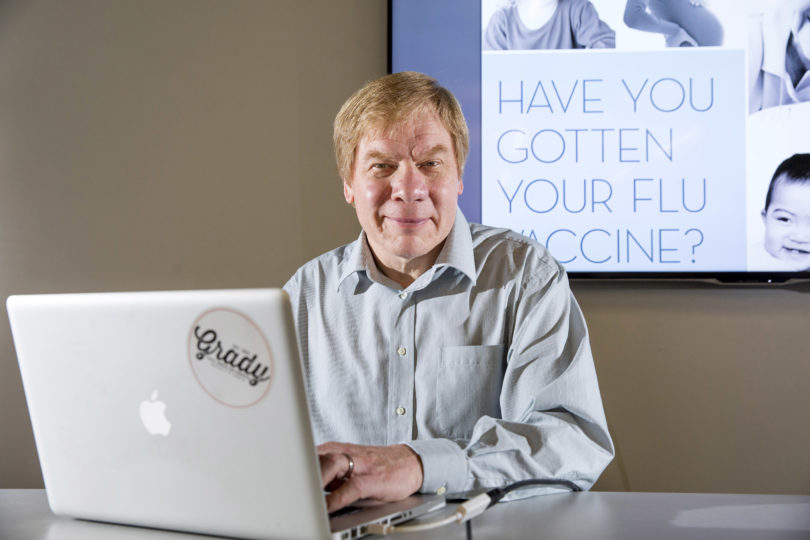Journalists face some unique challenges when they try to report accurately on a major infectious disease outbreak like the one associated with COVID-19, according to professor Glen Nowak, a former director of media relations at the Centers for Disease Control and Prevention and director of the Center for Health and Risk Communication in the Grady College of Journalism and Mass Communication at the University of Georgia.
Below, Nowak shares his thoughts about COVID-19 communications and how journalists are handling news about the pandemic.
What are some of the challenges journalists face while covering an outbreak like this one?
Most laypeople, including journalists, have limited knowledge about infectious diseases, including how they spread or how long it can take before an infection causes symptoms. Unfortunately, many infectious diseases, particularly those that are new or new to us, bring much complexity and uncertainty. Infectious diseases often have incubation periods, cause initial symptoms that are not unique, and differ in how they are spread as well as how easily they are spread. This makes it difficult for journalists who are covering an outbreak to characterize the health threat, who is affected, and how things will unfold in the days and weeks ahead. Thanks to the complexity and uncertainty, it is often unclear to journalists, and in turn, the public, why public health actions and measures are or are not being taken by organizations like the CDC.
As the COVID-19 outbreak also illustrates, it can also be difficult for journalists to get access to the government experts and public health people for interviews. On one hand, journalists have many potential sources and places they can go for information, especially websites and university experts. On the other hand, they’re likely to have great difficulty getting access to the critical sources, such as the scientists working at CDC, the Food and Drug Administration or the National Institutes of Health.
How do journalists convey important information without sensationalizing or causing a panic?
First, it is important to recognize that it is the statements and actions taken by public health and government agencies that is usually the primary source of people’s concerns, questions, and worry. Second, panic is an extremely rare outcome in the truest sense of the term, which is taking irrational actions that have no value or purpose. With respect to the media, they have to balance using words, phrases, and images that convey the seriousness of the situation with those that primarily seek to grab attention. They also have to decide how they are going to portray information from official sources so that it conveys an appropriate and useful tone and frame. With COVID-19 updates and information, at this point the goal is to foster the right level of worry and concern, including so that people’s actions are helpful.
When you look at the wide range of responses that people have to media stories, it’s important to remember that those news stories on the actions being taken, recommended or considered primarily exist because journalists are covering the COVID-19 developments. COVID-19 is getting much media attention because government agencies and others are holding press conferences and media interviews to issue updates, warnings and recommendations. I think sometimes we focus too much on the news media when it comes to being satisfied or dissatisfied with the volume or visibility of information, and fail to recognize government agencies and other organizations are using and relying on news media to convey messages broadly and urge widespread actions.
Do you think news media has done a good job reporting on this issue so far?
I’ve been impressed for the most part. Not only are major and local news media outlets covering the story, many are also producing and promoting very helpful and easy-to-understand COVID-19 resources that are updated regularly and that are linked to CDC and other official sources. These include local actions as well as answers to frequently asked COVID-19 questions. As a result, it is easy for people who want more information to find and get it from a variety of places. Most news media have also taken down paywalls to make it possible to access the latest COVID-19 news for free.








